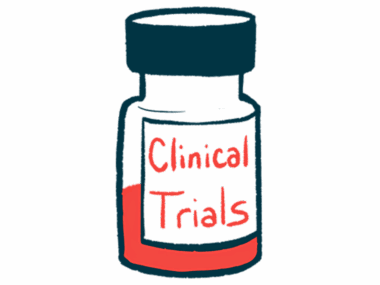More frequent Vyvgart dosing may be needed in real world: Study
gMG patients in expanded access trial saw symptoms improve
Written by |
Patients who received Vyvgart (efgartigimod alfa) as part of an expanded access program required more frequent dosing to treat generalized myasthenia gravis (gMG) than what was used during clinical testing, according to a small study in the Netherlands.
Study findings also showed that more than half of the patients, who had refractory or hard-to-treat disease, saw an improvement in symptoms, and most were able to reduce or stop other medications.
The study, “Efgartigimod in refractory autoimmune myasthenia gravis,” was published in the journal Muscle & Nerve.
Argenx’s Vyvgart works by blocking a protein called neonatal Fc receptor (FcRn), which extends the time antibodies remain circulating in the bloodstream by preventing their destruction. Blocking FcRn helps clear antibodies from circulation, including the harmful ones that drive MG.
Infused into the bloodstream once weekly over four-week cycles, Vyvgart is approved to treat adults who have self-reactive antibodies against the acetylcholine receptor, the most common ones found in MG patients. However, Vyvgart appears to work just as well when given every other week, broadening options for personalized treatment.
Weekly infusions for four weeks in study
Researchers reviewed the medical records of 16 adults with gMG — 11 women and five men — who received Vyvgart as part of an expanded access program put in place after the medication was approved in the European Union. The program gave patients access to Vyvgart before it was available on the market.
The patients, with a mean age of 47.3, had been living with the disease for a median of 12 years. All had been treated with corticosteroids and non-steroidal immunosuppressant medications, and most had received intravenous immunoglobulin (94%) and/or plasma exchange (88%).
Vyvgart was infused in the hospital once weekly for four weeks. One patient only received two infusions during these first four weeks. Doctors then adjusted how often Vyvgart was given based on a patient’s symptoms, levels of circulating antibodies, and side effects.
After four weeks, nine (56.3%) patients had a favorable outcome, defined as a clinically meaningful improvement on at least two disease measures or being able to reduce or stop corticosteroids or stop intravenous immunoglobulin or plasma exchange, without needing rescue medications.
Measures included the MG Activities of Daily Living (MG-ADL) scale, which looks at how the disease impacts patients’ daily functions. Over the four-week cycle, MG-ADL scores dropped by a mean of 4.37 points, indicating a clinically meaningful improvement.
In the Quantitative MG (QMG) and MG Composite (MGC) scales, where a clinically meaningful improvement was defined as a reduction of three points or more, scores dropped by a mean of 4.93 points and 7.6 points, respectively.
Better quality of life
Vyvgart also resulted in better quality of life over four weeks, as measured by a mean reduction of 5.75 points on the 15-item revised version of the MG Quality of Life (MG-QoL15r) questionnaire. Lower scores on the questionnaire indicate better quality of life.
The improvement in MGC scores was sustained until the last visit at a median of 20 weeks, or 4.6 months, and on the MGQoL15r questionnaire until a median of 24 weeks, or 5.5 months, but not in the two other measures of disease activity.
Five patients used rescue medications after a median of 56 days, or nearly two months. Of the four patients who discontinued treatment with Vyvgart, all stopped within the first 100 days, three of them “because of lack of efficacy,” the researchers wrote.
Vyvgart’s approval was largely based on data from the Phase ADAPT trial (NCT03669588), in which patients were given Vyvgart once weekly over four-week cycles. In this study, however, “all patients switched to a one, two, or three weekly frequency,” the researchers wrote.
Despite more frequent dosing, the levels of antibodies in the patients’ blood remained stable; that is, they did not fall “below safety thresholds,” the researchers said. Most patients (80%) reduced their doses of corticosteroids or azathioprine or required fewer doses of intravenous immunoglobulin or sessions of plasma exchange.
While Vyvgart “was effective for at least half of all patients,” the researchers wrote, “patients required more frequent dosing” than in the ADAPT clinical study. “Our experience provides insights to better delineate the long-term effectiveness” of Vyvgart for refractory gMG, they wrote.








Leave a comment
Fill in the required fields to post. Your email address will not be published.